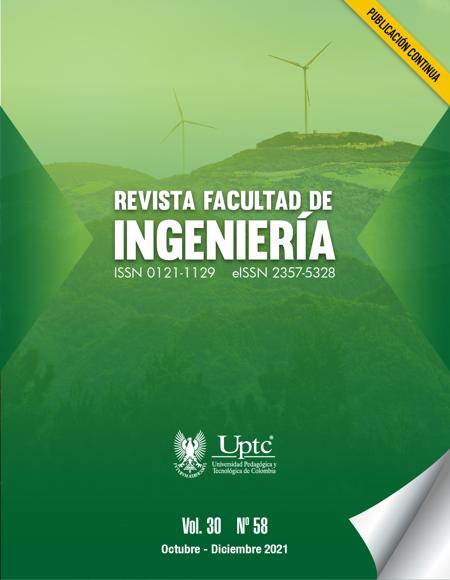Application of Spatial Data Science on Results of the Saber 5 Test

Abstract
The purpose of the Saber tests is to improve the quality of education in Colombia through periodic evaluations of the competencies development in basic and secondary education students. Although different data mining studies of the Saber tests’ results have been carried out, not many are based on spatial analysis of data in the educational field. This article presents a study based on exploratory and spatial analyses of the 2016 Saber 5 test dataset, which aims at identifying the relationship between the results of the test and the geographic or spatial distribution of the data. For the development of this research, four methodological phases were established: data selection and collection, correlation analysis, spatial data analysis, obtaining conclusions. Using the free GeoDa tool, a quantile and regression analysis was performed on the results of the Language, Mathematics, and Natural Sciences areas. Similarly, an analysis based on clustering was performed using the KMeans algorithm. The results obtained made it possible to determine the linear and spatial correlation between the data and the different departments of Colombia at the level of the three areas considered, which may be of interest in decision-making processes by the Ministry of Education. In addition, the research allowed to verify the usefulness of the GeoDa tool for conducting studies based on exploratory and spatial analysis in different application contexts.
Keywords
exploratory analysis, GeoDa, Saber test, spatial analysis
Author Biography
Gabriel-Elías Chanchí-Golondrino
Roles: Supervision, Formal Analysis, Investigation, Writing – Review and editing.
Monica-Esther Ospino-Pinedo
Roles: Conceptualization, Methodology, Writing – Review and editing.
Luis-Freddy Muñoz-Sanabria
Roles: Conceptualization, Methodology, Writing – Review and editing.
References
- P. Burbano, “Pruebas saber 11: el baremo de la desigualdad educativa en Colombia,” Holopraxis Ciencia, Tecnología e Innovación, vol. 5, no. 1, pp. 91–108, 2021
- S. M. Chica Gómez, D. M. Galvis Gutiérrez, A. Ramírez Hassan, “Determinantes del rendimiento académico en Colombia. Pruebas ICFES-Saber 11o, 2009,” Revista Universidad EAFIT, vol. 46, no. 160, pp. 48–72, 2010
- Ministerio de Educación Nacional, Pruebas saber, 2020. https://www.mineducacion.gov.co/1759/w3-article-397384.html?_noredirect=1
- A. Duque Castillo, J. G. Ortiz Rodríguez, “Pruebas ICFES Saber 11 y su relación con el desempeño académico en estudiantes de primer semestre de psicología,” Cuadernos Hispanoamericanos de Psicología, vol. 13, no. 1, pp. 26–35, 2013. https://doi.org/10.18270/chps..v13i1.1355 DOI: https://doi.org/10.18270/chps..v13i1.1355
- O. Vásquez Arrieta, “Las pruebas SABER 11° como predictor del rendimiento académico expresado en los resultados de la prueba SABER PRO obtenidos por las estudiantes de la Licenciatura en Pedagogía Infantil de la Corporación Universitaria Rafael Núñez,” Revista Científica Virtual Hexágono Pedagógico, vol. 9, no. 1, pp. 187–204, 2018
- M. Castro Ávila, J. Ruiz Linares, F. Guzmán Patiño, “Cruce de las pruebas nacionales Saber 11 y Saber Pro en Antioquia, Colombia: una aproximación desde la regresión geográficamente ponderada (GWR),” Revista Colombiana de Educación, no. 74, pp. 63–79, 2018. https://doi.org/10.17227/rce.num74-6898 DOI: https://doi.org/10.17227/rce.num74-6898
- W. Martínez-Mateus, Á. Turriago-Hoyos, “Análisis de distribución geográfica y espacial de los resultados de las Pruebas Saber 11 del Instituto Colombiano para el Fomento de la Educación Superior (ICFES). 2005-2012,” Cuadernos Latinoamericanos de Administración, vol. 12, no. 21, pp. 39–49, 2015 DOI: https://doi.org/10.18270/cuaderlam.v11i21.1618
- J. E. Cifuentes Medina, J. A. Chacón Benavides, I. Moreno Pinzon, “Análisis de los resultados de las pruebas estandarizadas Saber Pro en profesionales de la educación,” Revista Humanismo y Sociedad, vol. 6, no. 2, pp. 22–48, 2018. https://doi.org/10.22209/rhs.v6n2a02 DOI: https://doi.org/10.22209/rhs.v6n2a02
- G. A. Junca Rodríguez, “Desempeño académico en las pruebas Saber 11,” Panorama Económico, vol. 27, no. 1, pp. 8–38, 2019. https://doi.org/10.32997/2463-0470-vol.27-num.1-2019-2615 DOI: https://doi.org/10.32997/2463-0470-vol.27-num.1-2019-2615
- A. I. Oviedo Carrascal, J. Jiménez Giraldo, “Minería de datos educativos: Análisis del desempeño de estudiantes de ingeniería en las pruebas SABER-PRO,” Revista Politécnica, vol. 15, no. 29, pp. 128–140, 2019. https://doi.org/10.33571/rpolitec.v15n29a10 DOI: https://doi.org/10.33571/rpolitec.v15n29a10
- R. Timarán Pereira, J. Caicedo Zambrano, A. Hidalgo, Aplicación de la Minería de Datos en la Detección de Patrones de Desempeño Académico en las Pruebas Saber Pro, Universidad de Nariño, Pasto, Colombia, 2019
- D. Solis, D. Alegría, É. Gutierrez, V. Zapata, F. Vidal, R. Timarán, “Identificación de Patrones de Rendimiento Académico en las Pruebas Saber Pro entre 2012-2014, en las Competencias Lectura Crítica y Comunicación Escrita con Técnicas Predictivas de Minería de Datos,” Cuaderno Activa, vol. 11, no. 1, pp. 51–66, 2019
- J. S. Rengifo Collazos, C. D. Sánchez Cobo, C. Delgado Manquillo, C. Solarte Sarria, F. Vidal, R. Timarán Pereira, “Analítica de datos aplicada al contexto universitario. Caso de estudio: pruebas Saber Pro,” Cuaderno Activa, vol. 12, no. 1, pp. 13–19, 2020
- R. Timarán-Pereira, A. Hidalgo-Troya, J. Caicedo-Zambrano, “Factores asociados al desempeño académico en Lectura Crítica en las pruebas Saber 11 con árboles de decisión,” Revista Investigación e Innovación en Ingeniería, vol. 8, no. 3, pp. 29–37, 2021. https://doi.org/10.17081/invinno.8.3.4701 DOI: https://doi.org/10.17081/invinno.8.3.4701
- R. Timarán-Pereira, J. Caicedo-Zambrano, A. Hidalgo-Troya, “Árboles de decisión para predecir factores asociados al desempeño académico de estudiantes de bachillerato en las pruebas Saber 11,” Revista de Investigación Desarrollo e Innovación, vol. 9, no. 2, pp. 363–378, 2019.
- https://doi.org/10.19053/20278306.v9.n2.2019.9184 DOI: https://doi.org/10.19053/20278306.v9.n2.2019.9184
- L. M. Gómez Melo, Y. A. Jaramillo Córdoba, Descubrimiento de factores asociados al desempeño en las pruebas saber 5 con técnicas descriptivas de minería de datos, Grade Thesis, Universidad Tecnológica de Pereira, Colombia, 2017. http://repositorio.utp.edu.co/dspace/handle/11059/8745
- M. Rivero Sánchez, “Análisis espacial de datos y Turismo : Nuevas técnicas para el análisis turístico,” Revista de Estudios Empresariales, vol. 2, pp. 48–66, 2008
- M. Goodchild, R. Haining, “SIG y análisis espacial de datos: perspectivas convergentes,” Investigaciones Regionales, no. 6, pp. 175–201, 2005
- L. L. Sánchez-Peña, “Alcances y límites de los métodos de análisis especial para el estudio de la pobreza urbana,” Papeles de Población, vol. 18, no. 72, pp. 147–179, 2012
- M. F. Cardenas, J. F. Escobar, K. Gutiérrez, “Equidad territorial en Medellín: espacio público, amenazas naturales y calidad del aire,” Estudios Socioterritoriales, no. 27, pp. 1–18, 2020 DOI: https://doi.org/10.37838/unicen/est.27-046